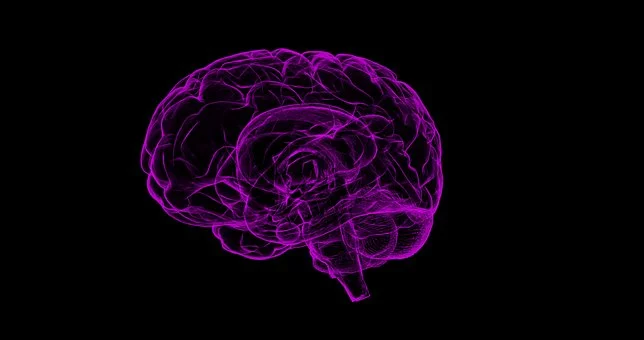The Importance of Exercise for The Brain and Nervous System
We have spent millions of years evolving as a species in such a way that engaging in strenuous physical activity has virtually always been a significant component of existence for all humans on every continent. This has been the case across the board.
It is easy to lose sight of the fact that the body is but an extension of the intellect in the modern world. Different schools of thought, such as psychology, have worked toward the goal of disentangling the mind from the body. The effects of technology, which favor having a sedentary lifestyle, further reinforce this mentality by encouraging people to lead inactive lifestyles. Physical exercise, even though it has contributed to the improvement of certain parts of life, has suffered as a result of the rise of technological living. Physical activity is one of the best instruments we have for maximizing how our minds work.
In the following essay, the interconnectivity of the body and brain is discussed, with an emphasis placed on the significance of engaging in regular exercise to foster and preserve the health of the nervous system.

The Benefits of Exercise Are Felt First in the Brain, Then in the Body
Recent studies from various lines of research have demonstrated that the body and the brain are inextricably linked. The brain reacts in advance, long before we are fully aware of the decisions we make and the actions that follow from those choices. It can take anywhere from six to ten seconds, depending on the type of processing that needs to be done and how quickly the brain responds. This applies to any kind of physical activity, as well as our thoughts, feelings, sensations, and perceptions – in other words, our complete experience of living.
In terms of working out, the brain is where all activities first materialize and only then are they carried out on the body. For a physical action to take place, the brain must first send nerve impulses to the muscles that will be employed in the activity so that they may receive instructions. Following this, the muscles will begin to contract, which will in turn send a signal back to the brain. After this point, only then is the brain able to understand that the contraction has taken place, and only then are we able to become conscious that we have performed a physical action.
In this sense, the component of brain processing that enables us to feel as having an experience is the last to come into place, and as a result, we are the last to know what is going on inside of our brains and bodies!
When contemplating the subsequent advantages of physical activity for one’s mental health, it is important to keep in mind the intricate relationship that exists between the human brain and the rest of the body.
There are 5 positive effects that exercise has on both the brain and the nervous system.
The relevance of exercise for the maintenance of optimum mental health and overall well-being is illustrated by the following benefits.
1. Necessary for the Development of the Nervous System
It has been known for a very long time that physical activity encourages the growth of a child’s neurological system, and as a result, it is considered to be of utmost significance for children. The vast majority of schools incorporate some form of physical education into their curricula, and parents and teachers alike stress the need for their children to get lots of exercise through activities such as active play, competitive sports, gymnastics, and dance.
Exercising during pregnancy has been shown to improve the neurological development of the fetus while it is still in the uterus, according to a set of research that came as a complete surprise.
Even though physical activity is necessary for the maturation of a teenager’s nervous system, many adolescents exhibit a decreasing trend toward activity as they become older. This has been demonstrated to hurt a child’s cognitive and academic performance and is a requirement even though this effect can be noticed in children.
An hour of moderate to vigorous physical activity per day is generally considered to be the bare minimum requirement for the health of children and adolescents. On the other hand, the recommendation for adults is to engage in physical activity for only half that amount of time but at a lower intensity.
Later research has started to refute the idea that exercise is only vital for the development of a growing neurological system. It is now known that the nervous system continues to expand even after a person reaches maturity, therefore this idea has been disproven. The cells that make up our nerves go through a process of continual turnover and renewal, just like every other type of cell. Exercising helps to enhance this process, which in turn improves neurogenesis (neuronal regeneration) and growth in both the developing neural system and the adult nervous system.

2. Cognition, Mental Alertness, and Neurogenesis
The process by which exercise boosts neurogenesis has a significant influence on both the cognitive capacity and the level of mental awareness. This is because it tends to raise levels of neurotrophic factors, such as BDNF, and regulate the release of neurotransmitters in the majority of the brain’s regions. The effects are particularly significant in the region of the brain known as the hippocampus, which is considered to be one of the primary regions involved in the process of learning.
When the level of cortisol, which is a key stress hormone, is higher than the level of brain-derived neurotrophic factor (BDNF) in various brain regions, it is well-recognized that this hurts cognitive function. This route is also involved in the interaction of other adrenergic hormones, such as norepinephrine, which helps to facilitate focus and attention as well as other aspects of mental alertness that are related to cognition. Exercising has been demonstrated to reduce the signaling of stress hormones in the brain as well as control these hormones’ activity, which is another proof that exercising can make a person smarter.
Research conducted on animals has demonstrated that certain types of physical activity, specifically those that increase the heart rate (cardio exercise), such as jogging, are beneficial to the development, survival, and differentiation of neurons. It should not come as a surprise that exercise also encourages the process of blood vessel growth and regeneration because new nerves develop in tandem with new blood vessels throughout this process. Exercise of a moderate intensity that increases heart rate can promote optimum neurogenesis in several different ways, including those listed above.
The procedures described above also describe the neurological aspect of the process of developing muscle. Memory that is stored in the muscles and memory that is stored in the brain are both examples of processes that are very similar but are housed in separate parts of the central nervous system. Through the same pathways that are related to BDNF and other neurotropic factors, physical activity has a positive impact on both short-term and long-term memories, as well as learning.
The process of learning itself can stimulate the production of new neurons. Learning new skills can be facilitated by physical exercise, which, on a biological level, results in the expansion of new neurons in the brain and the rest of the body.
3. the malleability of neurons
Neuroplasticity is the capacity of neurons to be flexible in the way they adapt, connect, and fire together. Exercise is one of the best ways to increase neuroplasticity. If you have ever found it difficult to stop thinking a certain thought or feeling a certain feeling, you may benefit from exercising to boost your neuroplasticity and help your neurons fire along a different connection. This is especially true if you have ever found it difficult to stop thinking a certain thought or feeling a certain feeling.
According to the findings of various pieces of research, physical activity boosts the neurons’ capacity for plasticity in several different ways. One of these relates to the neuroplasticity of the sympathetic nervous system, which is the system that, in general, controls the tension and stress levels in the body.
Deficits in sympathetic neuroplasticity have been linked to the development of persistent anxiety, as well as to the promotion of detrimental changes in digestion, cardiovascular function, sleep quality, wakefulness, and immunological performance that are generated by stress. Exercise of moderate intensity may be beneficial in reducing the over-excitability of the sympathetic nervous system, a factor that is present in a variety of diseases.
4. Integration of Temporal and Spatial Information
Coordination, balance, and a sense of direction in space are all functions that are dependent on nerve communication between the brain and the body. By improving both sides of the equation, exercise can improve all three of these factors simultaneously.
The areas of the brain that are responsible for balance, spatial orientation, and coordination are the ones that are specifically stimulated during physical activity. In addition to this, the hiring and firing of neurons both within and outside of the brain are improved, as well as the strength of the muscles. Because of this, your posture will improve, your automatic (autonomic) reactions will be quicker, and your sense of balance will get stronger.
5. Ability to Control Emotions and Have Confidence in Oneself
Exercising tends to stabilize neurotransmitter release in fundamental brain locations, such as the brain stem and the hypothalamus, according to the findings of a comprehensive study that investigated the effects of wheel running on lab rats.
These fundamental regions of the brain are responsible for controlling fundamental involuntary processes that are vital for survival, such as breathing and keeping the heartbeat steady. However, a significant number of them have neuronal extensions that connect to other regions of the brain. Some of these other regions are associated with higher-order cognition, self-identity, introspection, and emotional regulation. Exercising assists to regulate these brain areas indirectly by promoting better function in the core brain areas, in particular by reducing the production of stress hormones and regulating neuro-excitability in these areas. This was demonstrated by the studies that were conducted.
Along the same lines of observation, other research indicates that exercise also helps to enhance or sustain high self-esteem in certain individuals.
